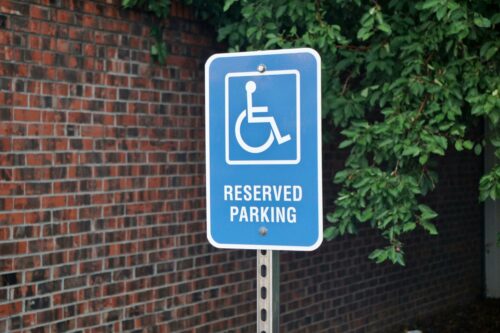Technology has revolutionised special needs education, opening a world of possibilities for more inclusive, accessible, and effective learning environments. Beyond just facilitating learning, technology empowers educators to create dynamic educational experiences that cater to a diverse range of learning needs.
The Role of Technology in Special Needs Education
The essence of technology in special needs education lies in levelling the playing field. It is about ensuring that all students, regardless of their unique learning needs, have equal opportunities to learn, grow, and thrive. By breaking down barriers, technology creates a more inclusive and equitable educational landscape.
Assistive technology is a cornerstone in this context, helping students with special needs overcome various learning challenges. This includes software that reads text aloud for visually impaired students and communication devices enabling non-verbal students to express themselves. These technologies not only make education more accessible but also more engaging, significantly enhancing the learning experience for students with special needs.
Moreover, technology facilitates personalised learning. Every student with special needs has unique requirements, and technology helps cater to these individual differences. Adaptive educational software allows educators to tailor the learning process to each student’s specific needs, abilities, and learning styles. This customisation improves learning outcomes, fostering a deeper understanding and mastery of subjects.
Additionally, technology promotes independence among students with special needs. Equipped with the right tools and resources, these students can take charge of their learning, fostering self-confidence and self-reliance. This independence is crucial in developing life skills that extend beyond the classroom.
Expanding the Scope of Technology in Special Needs Education
Technology’s impact in special needs education also extends to collaborative learning. Digital platforms enable students to work together on projects and assignments, fostering teamwork and social skills. This collaborative approach helps students with special needs build relationships and improve their communication abilities, crucial for their overall development.
Furthermore, immersive technologies like virtual reality (VR) and augmented reality (AR) offer new dimensions in special needs education. These technologies can simulate real-world environments and scenarios, providing safe spaces for students to practise and hone their skills. For example, VR can be used to teach road safety or social interaction in controlled, risk-free settings.
For emotional and behavioural development, AI-driven analytics can provide insights into students’ progress and challenges. Educators can use this data to adjust teaching strategies and provide targeted interventions, ensuring that each student receives the support they need to succeed.
Exploring the World of Assistive Technology in Education
Assistive technology in education is a broad term that encompasses a wide range of tools, devices, and software designed to help students with special needs overcome learning challenges. These technologies are specifically designed to improve the functional capabilities of individuals with disabilities, enabling them to participate fully in their education and achieve their full potential.
One of the most common forms of assistive technology is text-to-speech software. This technology is particularly beneficial for students with visual impairments or dyslexia, as it reads out text aloud, making it easier for them to comprehend written material. Similarly, speech-to-text software can be beneficial for students with physical disabilities that affect their ability to write or type, allowing them to dictate their thoughts and have them transcribed into text.
For students with communication difficulties, augmentative and alternative communication (AAC) devices can be life changing. These devices can range from simple picture boards to sophisticated electronic devices that generate speech, enabling non-verbal students to express their thoughts and needs.
Assistive technology also includes various software and apps that can help students with learning disabilities. There are programs that can help with reading comprehension, math skills, and organisation. These tools can be customised to the specific needs of each student to enhance their learning experience.
Moreover, assistive technology can also promote independence and self-confidence among students with special needs. By providing them with the tools they need to overcome their challenges, these technologies empower students to take charge of their own learning.
The Impact of Special Education Software on Learning Outcomes
Special education software is a type of technology that has been specifically designed to cater to the unique learning needs of students with disabilities. These software programs can significantly enhance the learning experience, making education more accessible, engaging, and effective for students with special needs. But how exactly does special education software impact learning outcomes? Let us explore this further.
One of the key benefits of special education software is its ability to facilitate personalised learning. Every student with special needs is unique, with their own set of strengths, weaknesses, abilities, and learning styles. Special education software can cater to these individual differences, allowing educators to adjust the learning process to suit the specific needs of each student. This approach can significantly improve learning outcomes, fostering a deeper understanding and mastery of the subject matter.
In addition, special education software can also provide interactive learning experiences. Interactive learning is a powerful teaching strategy that can enhance student engagement, motivation, and retention. Special education software can also provide immediate feedback, which is crucial for effective learning. Immediate feedback can help students understand their mistakes, learn from them, and make necessary adjustments. This can lead to improved performance and better learning outcomes.
Furthermore, special education software can also promote independence among students with special needs. With the right software, these students can take charge of their own learning, fostering self-confidence and self-reliance.
In essence, special education software can have a profound impact on learning outcomes. By facilitating personalised learning, promoting interactive learning experiences, providing immediate feedback, and fostering independence, it can significantly enhance the learning experience for students with special needs. As we continue to harness the power of this technology, the future of special needs education looks brighter than ever.
Harnessing the Power of Inclusive Learning Tools for Special Needs Students
Inclusive learning tools are a vital aspect of technology in special needs education. They are designed to ensure that all students, regardless of their abilities or disabilities, can fully participate in the learning process. These tools can significantly enhance the learning experience for students with special needs, fostering inclusivity, equality, and empowerment. But how exactly can we harness the power of these tools? Let us delve deeper to understand this.
Inclusive learning tools can be as simple as adjustable furniture that can be modified to the physical needs of each student, or as sophisticated as software programs that can adapt to the learning styles and abilities of individual students. These tools are designed to remove barriers to learning, ensuring that all students have equal opportunities to learn, grow, and thrive.
For instance, interactive whiteboards can make lessons more engaging and accessible for students with special needs. These whiteboards can display text, images, and videos, and can also incorporate touch-screen technology, allowing students to interact directly with the lesson material. This can significantly enhance student engagement and comprehension, making learning more fun and effective.
Similarly, text-to-speech and speech-to-text software can make written material more accessible for students with visual impairments or dyslexia, and for those with physical disabilities that affect their ability to write or type. These technologies can read out text aloud or transcribe spoken words into text, making it easier for these students to participate in the learning process.
Inclusive learning tools can also promote independence among students with special needs. With the right tools, these students can take charge of their own learning, fostering self-confidence and self-reliance. These are a powerful ally in special needs education. By breaking down barriers and creating more inclusive and accessible learning environments, they empower students with special needs to reach their full potential.
Interactive Learning and Special Needs Educational Apps: A New Era in Tech-Enhanced Special Education Strategies
Interactive learning and educational apps have ushered in a new era of tech-enhanced teaching strategies. These tools are revolutionising the way students with special needs learn, offering more engaging, personalised, and effective learning experiences.
Interactive learning is a powerful teaching strategy that can significantly enhance student engagement, motivation, and retention. It involves active participation from students, encouraging them to engage with the lesson material, ask questions, solve problems, and think critically. This can make learning more fun and engaging for students with special needs, fostering a deeper understanding and mastery of the subject matter.
Special needs educational apps, on the other hand, offer a wealth of resources and tools that can cater to the unique learning needs of each student. These apps can provide personalised learning experiences, which can significantly enhance the learning experience, making education more accessible and effective for students with special needs.
Moreover, these apps often incorporate interactive elements, such as games, quizzes, and simulations, making learning more fun and engaging. They can also provide immediate feedback, helping students understand their mistakes, learn from them, and make necessary adjustments. This can lead to improved performance and better learning outcomes.
In addition, special needs educational apps can also promote independence among students with special needs. With the right apps, these students can take charge of their own learning, fostering self-confidence and self-reliance.
Conclusion
Technology is a powerful tool that is revolutionising the field of special needs education. From assistive technology to adaptive educational software, inclusive learning tools to interactive educational apps, technology is breaking down barriers and creating more inclusive, accessible, and effective learning environments. It is empowering students with special needs to take charge of their own learning, fostering self-confidence, self-reliance, and independence.
As we continue to explore and harness the power of technology, the future of special needs education looks brighter than ever.
FREQUENTLY ASKED QUESTIONS:
1. What is the role of technology in special needs education?
A: Technology in special needs education aims to level the playing field, ensuring all students have equal opportunities to learn. It helps overcome learning challenges, facilitates personalised learning, and promotes independence among students with special needs.
2. What is assistive technology in education?
A: Assistive technology refers to tools, devices, and software designed to help students with special needs overcome learning challenges. Examples include text-to-speech software, speech-to-text software, and augmentative and alternative communication devices.
3. How does special education software impact learning outcomes?
A: Special education software facilitates personalised learning, provides interactive learning experiences, offers immediate feedback, and promotes independence. These features can significantly enhance learning outcomes for students with special needs.
4. What are inclusive learning tools?
A: Inclusive learning tools are designed to ensure all students, regardless of their abilities or disabilities, can fully participate in the learning process. They can range from adjustable furniture to software programs that adapt to individual learning styles.
5. How are interactive learning and special needs educational apps shaping special needs education?
A: Interactive learning and special needs educational apps offer engaging, personalised, and effective learning experiences. They incorporate interactive elements, provide immediate feedback, and promote independence, significantly enhancing the learning experience for students with special needs.






 James
James 

